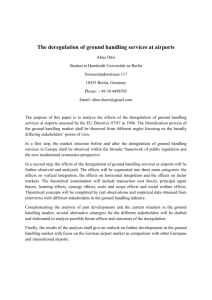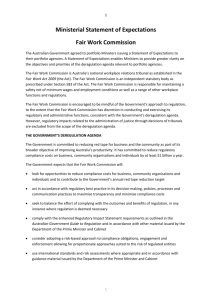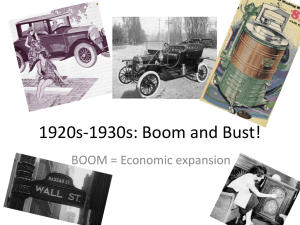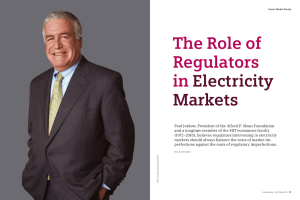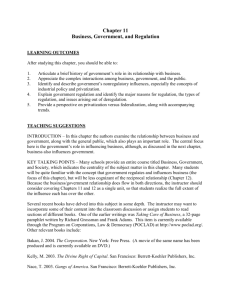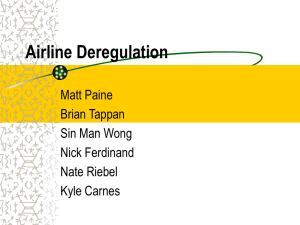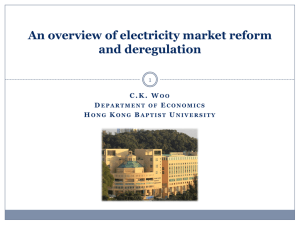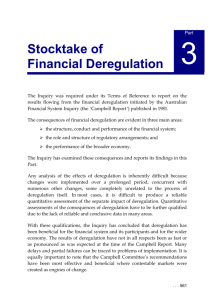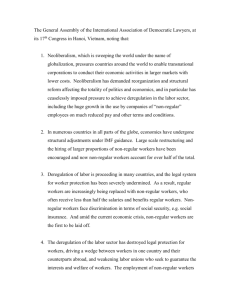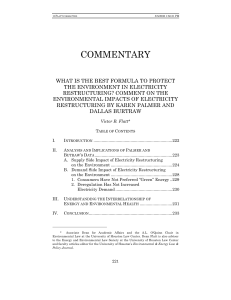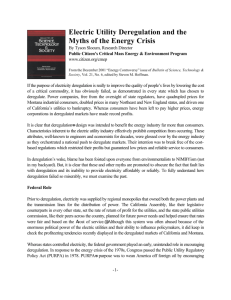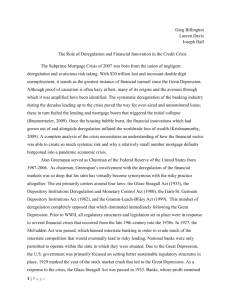View Extended Abstract - United States Association for Energy
advertisement
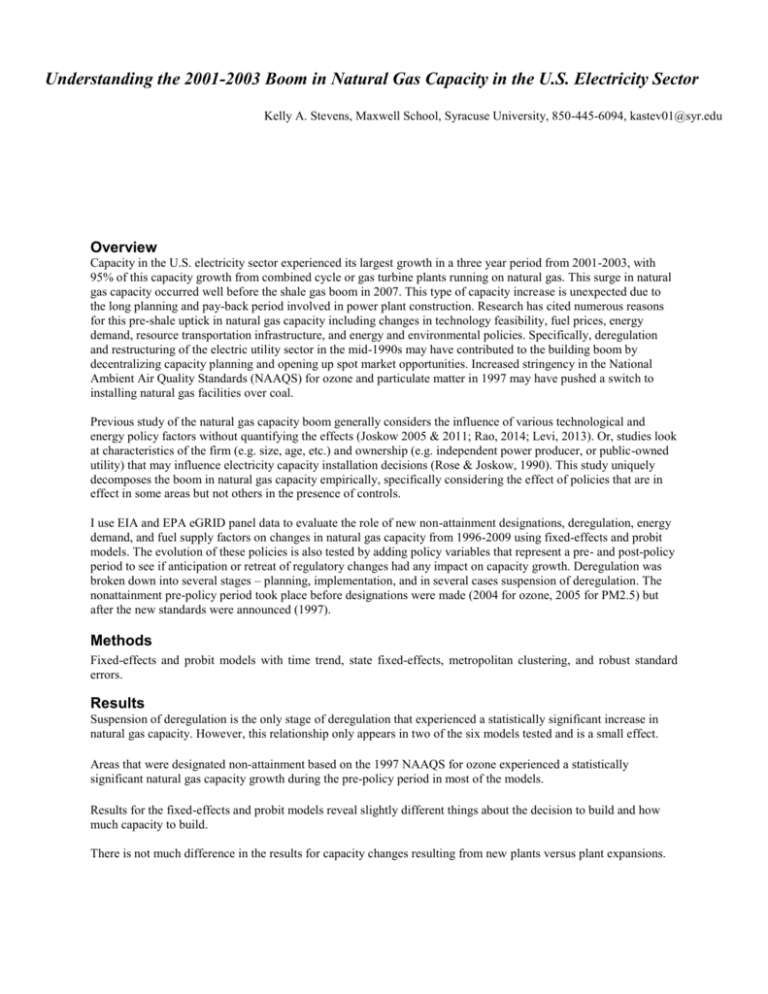
Understanding the 2001-2003 Boom in Natural Gas Capacity in the U.S. Electricity Sector Kelly A. Stevens, Maxwell School, Syracuse University, 850-445-6094, kastev01@syr.edu Overview Capacity in the U.S. electricity sector experienced its largest growth in a three year period from 2001-2003, with 95% of this capacity growth from combined cycle or gas turbine plants running on natural gas. This surge in natural gas capacity occurred well before the shale gas boom in 2007. This type of capacity increase is unexpected due to the long planning and pay-back period involved in power plant construction. Research has cited numerous reasons for this pre-shale uptick in natural gas capacity including changes in technology feasibility, fuel prices, energy demand, resource transportation infrastructure, and energy and environmental policies. Specifically, deregulation and restructuring of the electric utility sector in the mid-1990s may have contributed to the building boom by decentralizing capacity planning and opening up spot market opportunities. Increased stringency in the National Ambient Air Quality Standards (NAAQS) for ozone and particulate matter in 1997 may have pushed a switch to installing natural gas facilities over coal. Previous study of the natural gas capacity boom generally considers the influence of various technological and energy policy factors without quantifying the effects (Joskow 2005 & 2011; Rao, 2014; Levi, 2013). Or, studies look at characteristics of the firm (e.g. size, age, etc.) and ownership (e.g. independent power producer, or public-owned utility) that may influence electricity capacity installation decisions (Rose & Joskow, 1990). This study uniquely decomposes the boom in natural gas capacity empirically, specifically considering the effect of policies that are in effect in some areas but not others in the presence of controls. I use EIA and EPA eGRID panel data to evaluate the role of new non-attainment designations, deregulation, energy demand, and fuel supply factors on changes in natural gas capacity from 1996-2009 using fixed-effects and probit models. The evolution of these policies is also tested by adding policy variables that represent a pre- and post-policy period to see if anticipation or retreat of regulatory changes had any impact on capacity growth. Deregulation was broken down into several stages – planning, implementation, and in several cases suspension of deregulation. The nonattainment pre-policy period took place before designations were made (2004 for ozone, 2005 for PM2.5) but after the new standards were announced (1997). Methods Fixed-effects and probit models with time trend, state fixed-effects, metropolitan clustering, and robust standard errors. Results Suspension of deregulation is the only stage of deregulation that experienced a statistically significant increase in natural gas capacity. However, this relationship only appears in two of the six models tested and is a small effect. Areas that were designated non-attainment based on the 1997 NAAQS for ozone experienced a statistically significant natural gas capacity growth during the pre-policy period in most of the models. Results for the fixed-effects and probit models reveal slightly different things about the decision to build and how much capacity to build. There is not much difference in the results for capacity changes resulting from new plants versus plant expansions. Conclusions The results show that areas may have rushed to build cleaner natural gas power plants before stricter building regulations took place during non-attainment. These findings challenge the common notion that deregulation caused this capacity boom, and offers up an alternative scenario that considers the impact of anticipated environmental regulations. By looking at several stages of policy development, a more complete picture of the factors involved in the long-term decisions to invest in new capacity is provided. Recent policy efforts to address climate change have called for increases in generation from this underutilized natural gas capacity and increased capacity of low or zero emitting power sources. As policymakers consider these and other strategies to decrease emissions from the electricity sector, this study sheds light on the effectiveness of past policies on the recent natural gas capacity boom. References (1) Joskow, P. L. (2011). Comparing the Costs of Intermittent and Dispatchable Electricity Generating Technologies. American Economic Review: Papers & Proceedings, 100(3), 238-241. (2) Joskow, P. L. (2005). Markets for Power in the United States: An Interim Assessment. A Joint Center of the Department of Economics, Laboratory for Energy and the Environment, and Sloan School of Management. 05-012 WP. (3) Levi, M. (2013). The Power Surge. Energy, Opportunity, and the Battle for America’s Future. Oxford: Oxford University Press. (5) Rao, V. (2012). Shale Gas: The Promise and the Peril. Research Triangle Park, NC: RTI Press. (4) Rose, N. L. & Joskow, P. L. (1990). The Diffusion of New Technologies: Evidence from the Electric Utility Industry. The RAND Journal of Economics, 21(3), 354-373.




